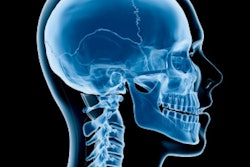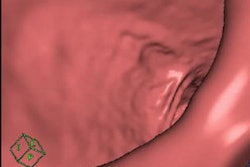Dear Advanced Visualization Insider,
Electronic cleansing has been something of a holy grail in CT colonography (CTC) research for years -- mainly because perfecting the process would allow most CTC exams to be performed without cathartic bowel cleansing, making it easier on patients and attracting people who have been avoiding screening altogether.
Electronic cleansing algorithms work by virtually removing residual matter from colonic CT images, allowing radiologists to see the polyps hidden underneath. Unfortunately, they don't work perfectly.
Now researchers from Italy, Japan, and the U.S. have teamed up to find an algorithm to make electronic cleansing work. Their technique uses deep convolutional neural networks to separate colonic contents. Learn how it performed in a study by clicking here.
A machine-learning technique also boosted the performance of cardiac fractional flow-reserve CT software better than two conventional methods that already work pretty well, according to another study. On a per-patient basis, the technique was superior in sensitivity, specificity, and positive and negative predictive values compared with traditional algorithms. Machine-learning algorithms appear to be skilled at learning patterns in medical images that are characteristic of disease. Maybe that's why they appear to be turning up everywhere.
In body PET/MRI scans, adding the head can reveal a wide array of new incidental findings, from vascular disease to microvascular ischemic changes and brain infarcts, according to researchers. And it hardly adds any time to the body scan.
Three-dimensional printing is opening new possibilities in surgery planning with its ability to enhance the understanding of complex pathologies for referring physicians, residents, students, and patients. But you have to work hard to get it right, said researchers from Switzerland who discuss the challenges of turning a volumetric dataset into a 3D-printed model and determining who will benefit most from the labor-intensive practice.
In Germany, a low-cost 3D printing phantom is being used with quantitative SPECT/CT to optimize radiation dose for radionuclide therapies for patients of all sizes.
In Italy, researchers have developed a prostate cancer computer-aided detection scheme that can improve the chances of selecting the right biopsy targets. The improvement wasn't seen among all readers and all lesions, however. Find out more here.
Why was so much of the recent RSNA 2016 meeting devoted to advanced visualization software? There are many reasons, of course, but in an interoperable world where clinicians can be anywhere, accessibility may be the most important reason. Learn more in contributing writer Dr. Stephen Holloway's article here.
For the rest of the news in 3D, advanced visualization, and computer-aided detection, we invite you to scroll thorough the links below, right here in your Advanced Visualization Community.



















